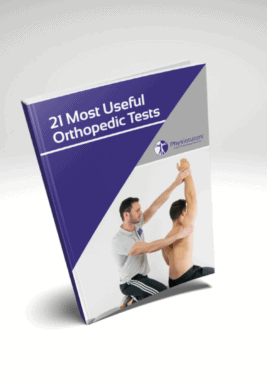Learn
Groin Pain Classification in Athletes | Doha Agreement | Groin Assessment
Groin pain in athletes is a common occurrence with groin injuries in male club football accounting for 4–19% of all injuries and 2–14% in women. Across different sports, males tend to have greater injury incidence than females.
The aim of the DOHA meeting was to find a consensus on the definition of groin pain and its classifications.
The classification system has three major subheadings of groin pain in athletes.
the defined clinical entities for groin pain are adductor-related, iliopsoas-related, inguinal-related, and pubic-related groin pain.
For all of these four entities, the athlete should report pain in the affected region that worsens on exercise during your history taking. To categorize athletes into these entities, palpation, resistance testing, and stretching of the affected muscle groups are used. It’s important to note that the pain upon resistance testing should be felt in the affected structure. As an example, pain during resisted adduction should be felt in the adductor group and not in, say, the inguinal region, as this would not signify adductor-related groin pain. So let’s look at the four entities in detail.
Number 1:
Adductor-related groin pain:
As previously mentioned pain felt in the adductor group during resisted adduction testing and tenderness over the adductor group signifies adductor-related groin pain.
Iliopsoas-related groin pain:
Indicators for this entity are Pain upon resisted hip flexion and hip-flexor stretching. Iliopsoas tenderness will be shear impossible to palpate.
Inguinal-related groin pain:
Localized pain in the inguinal canal region AND tenderness of the inguinal canal with no palpable inguinal hernia present plus aggravation during resistance testing of the abdominal muscles OR on pressure increase such as during Valsalva/cough or sneeze signify inguinal-related groin pain.
Pubic-related groin pain:
It was agreed upon that local tenderness of the pubic symphysis and the immediately adjacent bone signify pubic-related groin pain.
Number 2: Hip-related groin pain.
The members of the committee agreed that pain from the hip joint should always be considered as a possible cause of groin pain, especially if there is a suspicion through history or clinical examination.
This includes assessments for conditions such as femoroacetabular impingement or labral tears for which you can find a playlist in the top right corner.
And 3. Other causes of groin pain in athletes.
Next to the previous two subheadings, there may be other causes of groin pain namely other orthopedic, neurological, rheumatological, urological, gastrointestinal, dermatological, oncological, and surgical causes. These should be considered during your screening and history-taking process. A collection of conditions can be seen in this table.
If you are interested in rehab options, the Copenhagen adduction exercise has shown to be a valuable prevention tool for adductor-related groin pain.
21 OF THE MOST USEFUL ORTHOPAEDIC TESTS IN CLINICAL PRACTICE

References
Like what you’re learning?
BUY THE FULL PHYSIOTUTORS ASSESSMENT BOOK
- 600+ Pages e-Book
- Interactive Content (Direct Video Demonstration, PubMed articles)
- Statistical Values for all Special Tests from the latest research
- Available in 🇬🇧 🇩🇪 🇫🇷 🇪🇸 🇮🇹 🇵🇹 🇹🇷
- And much more!








